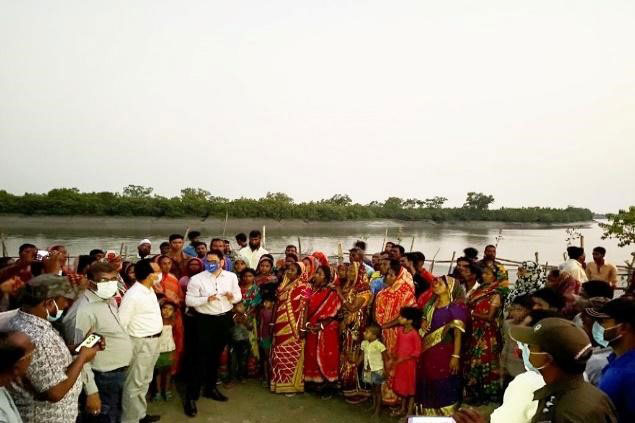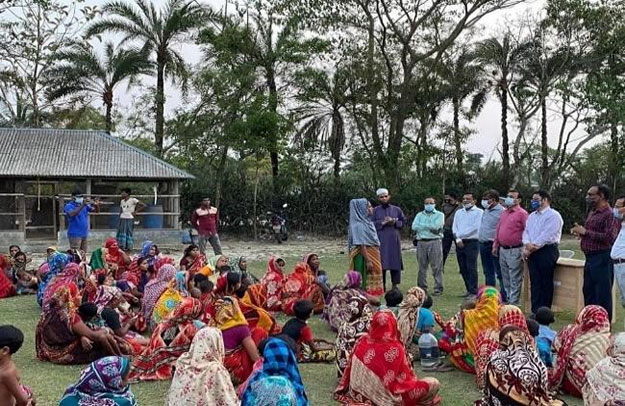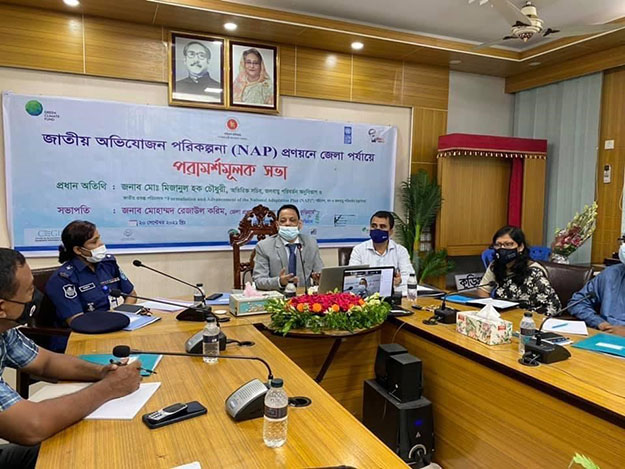NAP development using a multi-stakeholder participatory approach with high priority for social inclusion
Mr. Md. Mizanul Hoque Chowdhury
Additional Secretary,
Ministry of Environment, Forest and Climate Change (MoEFCC) and National Project Director of the NAP Formulation project, Bangladesh
*The interview was conducted in July 2022.



(Photo: Bangladesh NAP)
What is the status of the development of the NAP and what is the schedule for the future?
The Bangladesh NAP was approved on 31 October at a Cabinet Meeting by the Honorable Prime Minister, Sheikh Hasina.
The Bangladesh NAP set six Adaptation goals, 23 strategies and 113 interventions for eight priority sectors to fulfill the vision of becoming a climate resilient nation. The NAP considered 11 climate stress areas in devising 113 interventions based on developed adaptation pathways and sectoral adaptation requirements. These interventions are aligned with the global Sustainable Development Goals (SDGs) and 52 climate adaptation projects of the Bangladesh Delta Plan 2100 (BDP2100).
It proposed 113 interventions with an investment cost of USD 230 billion (at current rate) for next 27 years (2023-2050). The NAP proposed some policy reforms and multi-level institutional arrangement with effective coordination among multi-sectoral stakeholders from national to local level to support its smooth implementation. Further, it put strong emphasis on enhancing climate finance from international climate funds and development partners as well as from domestic sources and private sectors. Developing climate resilience will require seven times more than current spending to transform adaptation, at a rate of USD 8.5 billion per year, with USD 6 billion per year from external sources or international climate funds and development partners.
The NAP also includes a chapter dedicated to M&E and sets out indicators for evaluation up to 2050. The MRV (Measurement, Reporting, and Verification) system, which is an international standard, will be introduced into the implementation of the NAP. In addition, the government is in the process of developing an online MRV system, which will make available indicators and data at various levels.
The following points are most important next steps to ensure effective implementation of the NAP:
- Preparation of a road map or action plan for mainstreaming NAP into a five-year planning cycle
- Harnessing climate finance from GCF, other international climate funds, bi-lateral and multi-lateral development partners & private sectors. There is no alternative other than building enough capacity to achieve this
- Mainstreaming NAP actions into country investment portfolio of GCF, other international climate funds and development partners
- Advancement of the Development Result Framework (DRF) as proposed in NAP M&E framework following logical framework and ‘Theory of Change’
- Mainstreaming NAP actions into sector action plans and Annual Development Program (ADP)
- Updates to required policy reforms as proposed in NAP with prompt initiatives
- Integrated knowledge management and capacity development
What information is collected for the development and update of the NAP?
The NAP is so far the highest consulted policy document in Bangladesh. More than 5000 people from multi-sectoral stakeholders and vulnerable communities have been consulted through more than 35 stakeholder consultations, 100+ Focused Group Discussions (FGDs) and Key Informant Interviews (KIIs) at the national, sub-national and local level. More than 200 copies of the draft NAP were circulated among different ministries, line agencies, development partners and private sector entities. In parallel, the draft NAP was communicated with wider audiences by uploading it onto the MoEFCC website. Therefore, the NAP process followed a fully participatory approach with multi-disciplinary stakeholders, and identified various adaptation needs to make it country-driven.
NAP is prepared in an inclusive way and is based on indigenous knowledge on adaptation. The opinions of the local people, women’s groups, persons with disabilities, youth, ethnic community, children and elderly people, vulnerable communities, private sector and other disadvantaged groups are given high priority. Indigenous practices of farmers, fishermen, livestock and poultry farmers, women, ethnic community, disability and marginal communities were gathered through consultation process and incorporated into NAP to devise adaptation interventions and its activities
The NAP is based on the latest science-based information. The NAP considered Shared Socio Economic Pathways (SSPs) scenarios for future climate projections using CMIP6 data and analyzed risk and vulnerabilities to identify 11 climate stress areas in Bangladesh based on 14 climate hazards. Efforts were made to simulate mathematical models to assess the impacts of climate hazards on different resources.

- ADAPTATION PLAN DEVELOPMENT PROCESS
- Whether you’re looking to update an adaptation plan or are intending to start on one, engaging in the adaptation planning process is important work. Once you identify where your country is located in the process, you will find useful information such as tools and good practices.

- NAP PROCESS UNDER THE UN FRAMEWORK
- Understand why adaptation planning is necessary in the long run to implement the Paris Agreement. Learn about the latest trends in international adaptation negotiations and support systems for NAP formulation under the UN bodies.

- Finance & Implementation
- Identify key points, good practices, and useful examples for financing both in the planning and implementation phases of adaptation.

- Monitoring & Evaluation
- Once adaptation measures are implemented, Monitoring and Evaluation (M&E) is conducted to track and evaluate the effectiveness of adaptation measures. Find useful resources including the latest discussions and good practices here.

